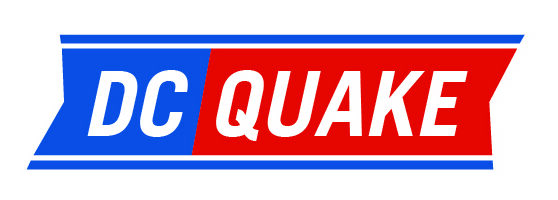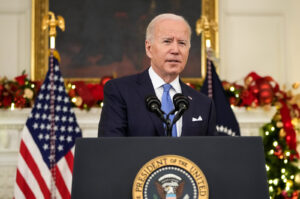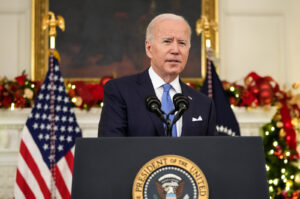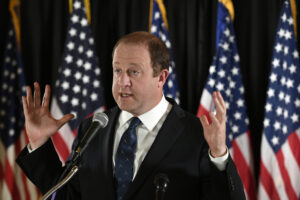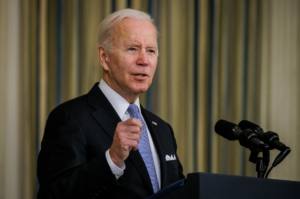COVID-19 and Trump’s daily briefing show: Fighting fake news with sarcasm
5 min read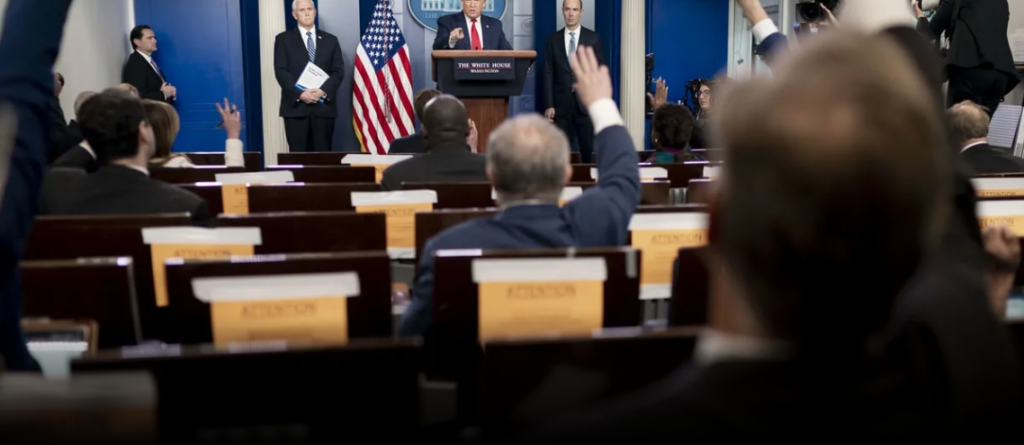
With the likes of Sean Spicer and Sarah Sanders at its helm, the daily White House press briefing in the United States has rarely been a source for factually accurate and reliable information during the Trump presidency.
Once an integral part of the news cycle, what’s left of its credibility and influence is diminished by Trump, who insists on using it as a pseudo campaign rally, a nationally televised forum to offer his opinions and air his grievances about anybody and anything on his mind.
In an election year, and with the country still reeling from the magnitude of the COVID-19 crisis when an emphasis on facts should be a priority for the President, the daily briefings continue to create a sense of confusion rather than offering comfort.
Despite appointing Vice-President Mike Pence to lead the coronavirus taskforce, and Kayleigh McEnany to be the new White House press secretary, President Trump seems reluctant to relinquish the podium during the press briefings, not satisfied with his thoughts being filtered through a spokesman.
It’s this TV personality’s instinct to perennially be the centre of attention in any situation, regardless of the need for expertise rather than showmanship, that led to one of his most dangerous slip-ups – one that, unlike most of his other criticised words, could seriously affect his re-election chances in November.
When facts interfere with sarcasm
As was the case with the many inconsistent and combative iterations of the daily press briefings that have come to define the Trump presidency in the past three-and-a-half years, factual updates on the administration’s policy initiatives tend to take a back seat in favour of verbal spats with the so-called “fake news” or “lamestream media”.
Trump is backed by a coronavirus taskforce armed with scientifically proven facts about the pandemic. Despite this, President Trump, craving praise for being the only person to rid the country of COVID-19, seems unable to resist interjecting with information and potential solutions that, upon being fact-checked, prove to be misleading, later blaming the media for drawing attention to the inaccuracy of his claims.
His latest such impromptu advice has put the White House on a war footing against the media to an extent unfamiliar even for a presidency built on questioning anything classified as mainstream. Trump’s unfounded suggestion to use injected disinfectants to treat COVID-19 patients has rightly resulted in a wave of widespread criticism being directed towards the President from medical and political experts alike.
Instead of correcting his mistake, however, Trump focused on arguing with the media, accusing them of not grasping the supposed sarcasm he had used to deliver his comments on disinfectants. This pivot towards sarcasm as a defence mechanism has only further harmed the credibility of the daily briefings as an authorised source of news, and compounded the already sour relationship between the President and the media.
Cancelling the show
Trump, as a former reality TV host, approaches every facet of his presidency with the primary goal of maximising and benefiting from its entertainment value, and the daily White House briefing is no exception. Its success is measured by the TV audience ratings, and by the amount of positive coverage it receives on various media outlets.
When an emphasis on facts should be a priority for the President, the daily briefings continue to create a sense of confusion rather than offering comfort.
It should come as no surprise, then, that President Trump was less than thrilled with the swift and severe condemnation of his comments regarding disinfectants. He resorted to a commonly utilised strategy drawn on by a White House constantly deflecting negative press coverage and interrogation – threatening to cancel the daily briefings, citing an unwillingness to facilitate direct channels of communication between himself and media outlets intent on criticising his every move.
While such antagonisation of the mainstream media is a strategy that appeals to President Trump’s core base of unwavering supporters, it has dangerous consequences for a nation in the grips of a pandemic. With thousands of people dying, the information and guidelines offered by the coronavirus taskforce have the potential to save lives. On the rare occasions when the President chooses to sit out the briefings, they offer a sense of calm and clarity desperately needed by a country so used to crises in recent years.
President Trump, wavering in his defiant insistence to cancel the briefings, seems to be realising their importance, but is still struggling to accept that his presence in front of the media could spell real trouble for his re-election chances, if his preferred measurements of TV audience ratings and national polling are anything to go by.
An unpredictable election year
With the country’s attention locked on COVID-19 and the presidential election just six months away, it’s difficult to imagine how the rest of this unprecedented election year could return to what can be described as “normal” for the candidates and voters.
Even if social distancing measures become a distant memory by the end of the northern hemisphere summer, campaign rallies and in-person voting may be unachievable. This changes the game for President Trump, and affects his reliance on crowded campaign events, and turnout rates of undecided voters in battleground states such as Pennsylvania, Michigan, Wisconsin, and Florida.
It’s understandable, then, why he’s looking towards presidential privileges such as the daily briefings to act as pseudo campaign rallies – an option that his opponent, Joe Biden, doesn’t have.
However, it’s the presidential nature of the briefings that threatens the outsider-against-the-mainstream strategy that Trump used to emerge victorious in 2016, and will, he hopes, do so again.
The problem with this strategy in 2020 is that Trump, no matter how hard he tries to hold on to the idea, is no longer an outsider. As the President, his every move is documented by the mainstream media, and he has the full weight of his party’s resources behind him and his re-election campaign. Using the daily briefings, therefore, to spread misinformation, and demean the media at a time when the country is more aware than ever of his performance, doesn’t bode well for his re-election prospects.
While Trump’s job approval ratings in national polls continue to waver in the 40 per cent range, he trails Biden in key battleground states, and remains unpopular with Democrats.
While the President may not need the support of Democrats, using his loyal base to edge out his opponent as he did in 2016, it’s important to remember that COVID-19 is not just an issue that will be in the minds of Democrats voting on election day.
If Trump insists on taking centre-stage during the COVID-19 crisis, he must do so in a way that instils a sense of confidence and comfort in the minds of potential voters, rather than the state of division and mistrust his comments have created.
Voters tend to support leaders during times of crisis. But only if they’re given a reason to do so. Therefore, President Trump should take a step back during this crisis if he wants the chance to take a step forward into a second term in office in November.
The Article was originally published on COVID-19 and Trump’s daily briefing show: Fighting fake news with sarcasm.
